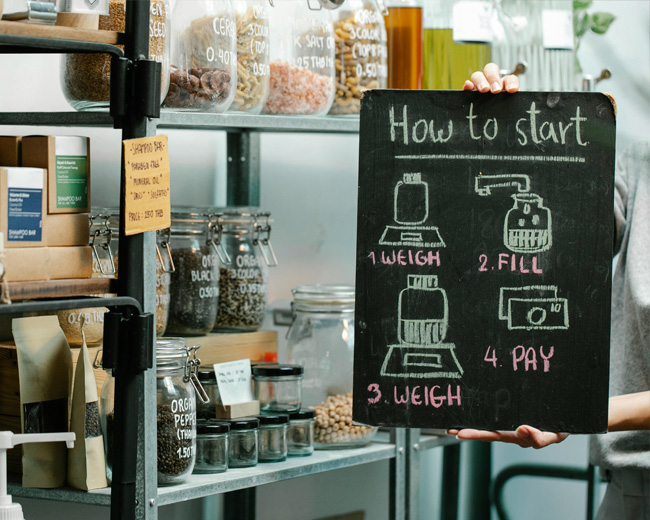In 2025, small businesses thrive by adapting to changing consumer behaviors—personalization, sustainability, omnichannel strategies, and value-focused offerings drive loyalty and growth.

Adapting to Changing Consumer Behaviors in 2025: Essential Steps for Small Businesses
In 2025, consumer behaviors are changing faster than ever, driven by economic uncertainty, technological progress, and shifting societal values. Small businesses, often agile but limited in resources, must adapt to remain competitive. According to recent reports, consumers are increasingly price-sensitive, seeking personalized experiences, sustainability, and smooth digital interactions.
With inflation lingering and tariffs impacting prices, shoppers are trading down in some categories while splurging in others, like travel or wellness products. This post outlines seven key steps small businesses can take to navigate these changes, ensuring growth and customer loyalty in a dynamic market.
1. Embrace Personalization Through Data Insights
Consumers now expect tailored experiences, with 71% frustrated when they’re absent. Small businesses should start by collecting basic customer data via tools like email sign-ups or loyalty programs. You can use affordable analytics platforms to segment audiences by demographics or preferences—Gen Z favors Instagram, while millennials lean toward YouTube.
Additionally, you should implement personalized email campaigns or product recommendations to boost engagement. For instance, a local boutique could suggest outfits based on past purchases, increasing revenue by up to 40% through customization. This step fosters loyalty without requiring massive investments.
2. Prioritize Sustainability and Ethical Practices
Sustainability is non-negotiable, with 70% of consumers willing to pay more for eco-friendly products and 36% of Gen Z opting for second-hand items. Small businesses can adapt by sourcing materials responsibly and highlighting these efforts in marketing. Adopt practices like using recycled packaging or offering resale programs.
You can also track carbon footprints with free tools and communicate transparently via social media. This not only attracts environmentally conscious shoppers but also differentiates your brand in crowded markets, potentially commanding premium prices.
3. Integrate Omnichannel Retail Strategies
The rise of "phygital" shopping means over 60% of consumers blend online and offline experiences. For small businesses, this involves creating seamless journeys across channels. Set up an e-commerce site synced with in-store inventory, allowing options like buy-online-pick-up-in-store. Incorporate AR tools for virtual try-ons, which can reduce returns and enhance satisfaction.
A coffee shop, for example, could use apps for mobile ordering while maintaining a welcoming physical space. This approach boosts convenience and loyalty in a home-centric world where consumers spend more on at-home enhancements.
4. Leverage Social Commerce and Influencers
Social media is a powerhouse, with platforms like TikTok Shop driving quick purchases and influencer marketing delivering high ROI. Small businesses should set up storefronts on Instagram or TikTok and use live streams for direct sales. Partner with micro-influencers—affordable and trusted by Gen Z and millennials—to promote products genuinely. Monitor trends with social listening tools to stay in line with viral behaviors. This approach can help expand reach, especially as social commerce is projected to reach 331 million users by 2028.
5. Focus on Convenience, Speed, and Flexible Payments
Shoppers expect quick delivery and multiple payment options, including Buy Now, Pay Later services like Klarna. Collaborate with logistics companies for same-day shipping and update Google listings to showcase these features. Provide various payment methods to lower cart abandonment. Amid economic worries, this appeals to value-conscious consumers who cut back on essentials but splurge on health or pet products.
6. Address Privacy and Security Concerns
With 23% of consumers hesitant to share data, strong privacy measures are crucial. Small businesses should implement secure payment gateways and clear policies. Build trust by getting consent for data use and avoiding invasive tracking. This safeguards your reputation, meets regulations, and encourages repeat business.
7. Offer Value Through Deals and Promotions
Economic uncertainty makes consumers more deal-focused, with many cutting discretionary spending. Introduce loyalty rewards, bundles, or flash sales to offer perceived value. Customize deals for different generations—millennials might respond to travel perks, and boomers to everyday savings. This helps sustain sales during difficult times.
Adapting to these behaviors requires agility, but small businesses’ flexibility is an advantage. By implementing these steps, you can turn challenges into opportunities, fostering long-term success in 2025’s consumer landscape. Start small, measure results, and iterate—your customers will thank you.
Recent articles:

Embracing Micro-Influencer Marketing for Small Businesses - Micro-influencers give small businesses authentic reach, higher engagement, and real sales—proving that trust, not size, drives modern marketing.

Using Financial Software to Streamline Small Business Bookkeeping - Automating your bookkeeping saves time, reduces errors, and gives you real-time insights—so you can focus on growth, not data entry.

Using Data Analytics to Drive Small Business Decisions - Data analytics empowers small businesses to make smarter decisions, cut costs, improve marketing, and stay competitive in today’s fast-paced market.

The Rise of Hybrid Work Models for Small Businesses - Hybrid work helps small businesses attract talent, save costs, and stay competitive, making flexibility a key driver of growth in 2025 and beyond.

Financial Planning for Seasonal Businesses - Seasonal businesses can thrive year-round by mastering cash flow, budgeting, and tax planning, turning challenges into lasting growth and stability.

Crafting a Realistic Cash Flow Forecast for 2025: A Guide for Small Businesses - A solid cash flow forecast helps small businesses anticipate challenges, seize growth opportunities, and thrive in 2025’ s uncertain economy.
Previous Articles:
- Elevate Your Business with Flexible Payment Options for Customers
- Understanding and Optimizing Your Business Credit Score
- The ROI of Automation: Affordable Tech Solutions for Small Business Growth
- High-Impact, Low-Cost Marketing Ideas for Small Businesses
- The Small Business Owner’s Guide to Managing Stress and Avoiding Burnout
- With Credit Tightening, How Small Businesses Can Build a Strong Financial Profile
- Post-COVID Trends That Small Businesses Can’t Afford to Ignore
- Standing Out in a Saturated Market: Tips for Small Business Differentiation
- Tightening the Belt: 10 Cost-Cutting Strategies for Small Businesses Facing Rising Expenses
- Five Steps Small Businesses Can Take to Increase Web Traffic
- Retention 101: Keeping Your Best Employees in a Competitive Market
- Creative Ways to Overcome Labor Shortages in Your Industry
- Preparing Your Business for the Next Recession: Actionable Tips
- 2025 Tax Updates for Small Businesses: What You Need to Know
- Email Marketing Mistakes Businesses Must Avoid
- Why Community Engagement is Crucial for Small Businesses
- Adapting to E-commerce: A Guide for Brick-and-Mortar Stores
- Harnessing the Power of Customer Reviews to Boost Your Business
- Small Business Owners Need an Integrated Approach to Post-Pandemic Financial Planning
- How to Build a Strong Brand Identity on a Budget
- The Future of Remote Work: Tips for Small Businesses to Thrive
- Navigating the Gig Economy: Opportunities and Challenges for Small Businesses
- Sustainable Business Practices: How Small Businesses Can Make a Big Impact
- 10 Essential Free Tools for Small Businesses
- 7 Ways Small Businesses Can Benefit from AI and Automation
- How to Leverage Social Media for Your Small Business in 2024
- The AI Advantage: How Small Businesses Can Thrive in the Age of Intelligence
- Shielding Your Business: Essential Insurance for Risk Management
- How Outsourcing Can Help Your Small Business Grow
- Securing Your Data: A Cloud Security Checklist for Small Businesses
- Mastering Cash Flow: How Banks Empower Small Businesses with Cash Management Tools
- Optimizing Productivity for a Remote Workforce
- Digital Strategies: The Engine of a Virtual Distribution Strategy
- Attracting and Engaging Gen Z: The Future of Your Workforce
- Managing Cash Flow for Business Prosperity
- How to Position Your Bank as a Trusted Advisor for Small Businesses—And Why It Matters
- Business Owners Need a Complete Risk Management Plan
- Preparing Your Business to Borrow
- Is Your Business Prepared for Generation Z?
- Small Business Trends You Don’t Want to Miss in 2024
- Ideas on How to Improve the Customer Experience
- Do You Use Website Analytics to Learn About Your Customers’ Interests?
- 5 Strategies to Incorporate into Your Business for 2024
- The Benefits of Mobile Banking and Remote Deposit Capture
- Should You Have a Blog on Your Website?
- Best Practices for Protecting My Business Online
- Using ACH to Improve Cash Flow
- 10 Ideas to Help You Recruit New Talent
- How AI Could Improve Your Business
- Using a Small Business Loan to Expand Your Services
- Local, State, and Federal Resources for Your Business
- Security Essentials for Keeping Business Data Safe
- Leveraging Your Bank’s Cash Management Services to Improve Your Business
- When is the Best Time to Obtain a Business Loan?
- How Much Insurance Do I Need for My Business?
- Incorporating the Latest Merchant Services Technology for Your Business
- A Checklist for Getting Your Small Business Tax Compliant
- How Third-Party Data Can Help Target Marketing
- Is Your Small Business Taking on too Much Debt? Steps to Take to Pay it Down More Quickly
- Leveraging Digital, Direct Mail, and Social Media to Drive Business Customer Acquisition
- Businesses Should Plan Ahead for Year-End Tax Strategies
- Cash Flow Management Tips for Small Businesses
- Recruiting Top-Tier Talent in a Tight Job Market
- Sales or Marketing – Banks Need Both to Grow Revenues
- The Biggest Security Threat to Your Business
- How to Prevent Employee Fraud in Your Business
- There's Still Time to Claim the Employee Retention Credit. What is it, and How to Qualify
- Preparing Your Business to Borrow
- Insurance Essentials for Managing the Many Small Business Risks
- Employers are finding that remote work can be an effective way to increase productivity and lower cost
- Don't Let Your Business be the Next Ransomware Victim
- Taking Advantage of Bank Cash Management Technology
- How to Take Your Digital Marketing to the Next Level
- How Annual Assessments Can Prevent Fraud in Your Business
- How to Position Your Bank as a Trusted Advisor for Small Businesses - And Why it Matters
- Getting to Yes with a Solid Loan Proposal
